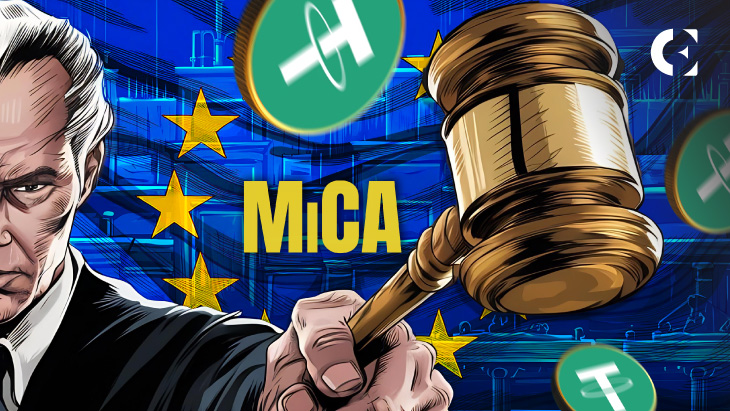 CaryptosHeadlines Media Has Launched Its Native Token CHT.
Airdrop Is Live For Everyone, Claim Instant 5000 CHT Tokens Worth Of $50 USDT.
Join the Airdrop at the official website,
CryptosHeadlinesToken.com
CaryptosHeadlines Media Has Launched Its Native Token CHT.
Airdrop Is Live For Everyone, Claim Instant 5000 CHT Tokens Worth Of $50 USDT.
Join the Airdrop at the official website,
CryptosHeadlinesToken.com
- MiCA rules force EU exchanges to delist Tether’s USDT, causing liquidity issues for crypto traders.
- Tether’s absence in the EU market pushes traders to use fiat or lower liquidity stablecoins.
- New stablecoin issuers are stepping up to fill the gap left by Tether’s removal in Europe.
The European Union’s Markets in Crypto-Assets Regulation (MiCA) is changing the region’s crypto market. Because of the new rules, some crypto exchanges in the EU removed Tether’s USDT stablecoin from their platforms.
MiCA has strict requirements for stablecoin issuers, which caused problems for stablecoins and affected liquidity in European crypto markets. With Tether’s removal, traders are using alternatives like the euro for trading, and new stablecoin issuers want to fill the gap.
MiCA Regulation and Its Impact on Tether
Bloomberg reports that MiCA requires stablecoin issuers to have an e-money license and follow the requirements.
Circle, the issuer of USDC, got its license in July, but Tether hasn’t yet. If Tether doesn’t get the license, exchanges must delist USDT by December 30. Despite Tether trying to reduce the illicit use of its stablecoin, such as its involvement in criminal activities that blockchain experts reported; however, the EU’s push to increase transparency has caused concerns.
Read also : Tether’s USDT Faces Potential Delisting from Coinbase
Industry experts warn that MiCA could reduce liquidity in crypto markets without fixing the main issues, such as illegal activities and the lack of regulatory clarity.
The Liquidity Crisis and Market Disruptions
Tether is important in crypto trading and is used across trading pairs. USDT helps with crypto transactions.
But the delisting of USDT from several EU exchanges is forcing traders to find other trade methods. The liquidity pool is shrinking, so traders are using fiat trading pairs or other stablecoins with lower liquidity.
Crypto exchange OKX, which removed USDT from its EU platform in April, saw a shift toward fiat trading pairs. Erald Ghoos, CEO of OKX Europe, said the change was a surprise. Many traders now face challenges in swapping between fiat currencies and digital assets instead of using stablecoin pairs.
Disclaimer: The information presented in this article is for informational and educational purposes only. The article does not constitute financial advice or advice of any kind. Coin Edition is not responsible for any losses incurred as a result of the utilization of content, products, or services mentioned. Readers are advised to exercise caution before taking any action related to the company.











